There have always been pop-up messages in Windows. But now there’s a centralized way in which these are treated. Called Action Center (but titled simply ‘Notifications’), it’s actually designed to be a direct equivalent of the same menu on the Windows Phone.
Make the Most of the Action Center
The new Action Center is a key interface element in Windows which provides you with many switch-on, switch-off options. It’s influenced by smartphone and tablet interface designs and really comes into its own in Tablet Mode.
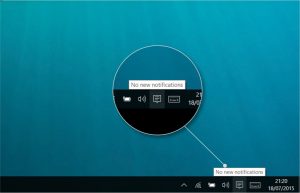
The bottom right corner of Windows’ desktop taskbar takes on new significance within Windows 10 thanks to a special area for notifications called the Action Center. Hover over the Action Center button and it will tell you if you have any new notifications.
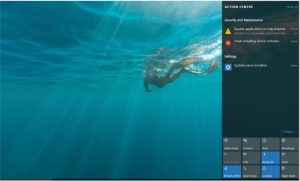
This is what the Action Center looks like when you click the button. As you can see, notifications are grouped by app – which apps are listed changes depending on which apps have sent you a notification. Older notifications are grayed out if you have already seen them but not dismissed them.
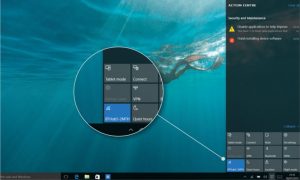
The most powerful part of this pop-up bar is actually at the bottom. This is the new equivalent of the Windows 8 Charms bar and enables you to perform some key functions (or actions). You can expand or collapse this bar depending on the functions you need to access.

Clicking a notification will take you to the app which generated that notification – here we’ve clicked on a Windows Update notification and the notification has now disappeared. But you might find yourself taken to a file or folder if appropriate.
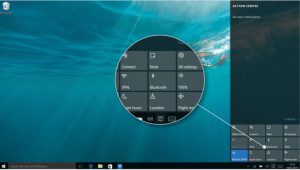
Clicking on the appropriate charm/action at the bottom of the Action Center app will enable the appropriate setting – here we’ve unclicked Bluetooth and Location. The latter enables us to control whether our Windows device shares its location with apps as well as with Windows itself for things such as weather updates.

Whether you’re on a Windows tablet or laptop, at some point you’ll either take it on an aircraft or you’ll want to shut down the Wi-Fi and Bluetooth on your device to save power. Clicking the Flight mode switches off all wireless communication and places an aeroplane icon in your notifications area instead of the Wi-Fi signal icon.

Tablet mode is another function you can control from the buttons at the bottom of Action Center. Tablet mode automatically prepares the desktop for use with a touchscreen and your fingers – so the Start menu automatically becomes a Windows 8-style Start screen, the search bar disappears and so on.
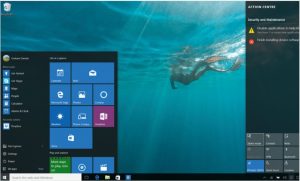
Switching back shrinks the Start menu once again. Tablet mode should trigger automatically on devices with a detachable keyboard when you undock the keyboard – we’ll talk more about Tablet mode later on. You always retain manual control, however.

Notifications are very useful, but can be a distraction sometimes; say if you need to concentrate on a particular task or you’re in a meeting. To stop distractions during this time you can click the Quiet Hours button in Action Center. No notifications will appear and the Notifications icon changes.
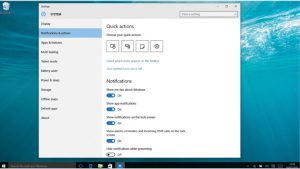
When you’re done with the notifications on the menu, you can click the Clear All button at the top to dismiss them (see previous step). In Settings > System > Notifications and Actions, you can choose the Quick Actions that appear at the top of the bottom panel in the Action Center.